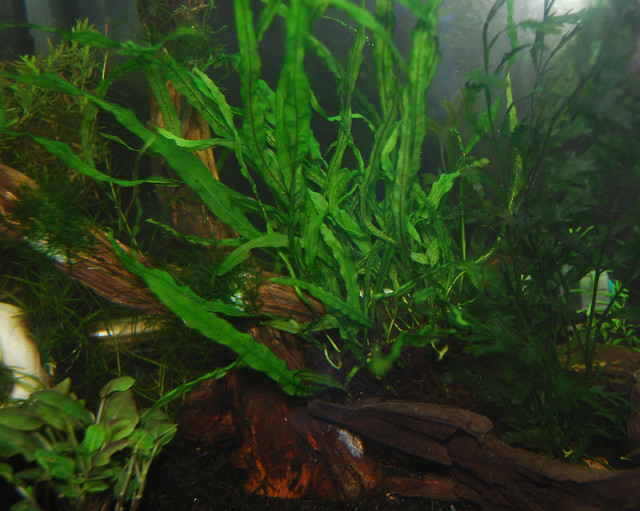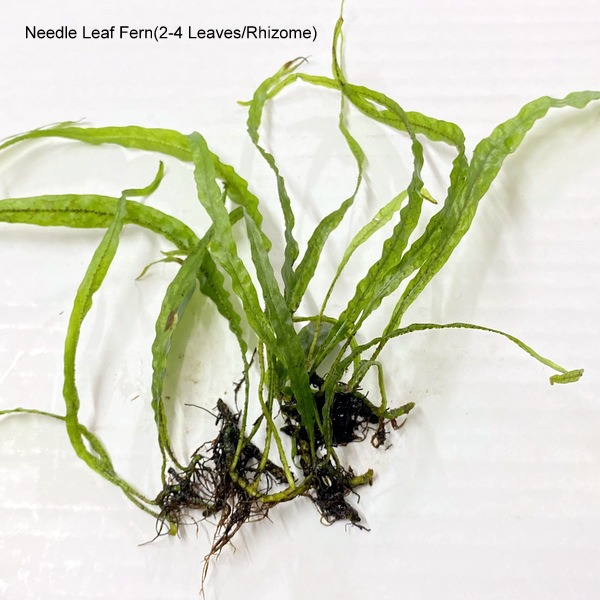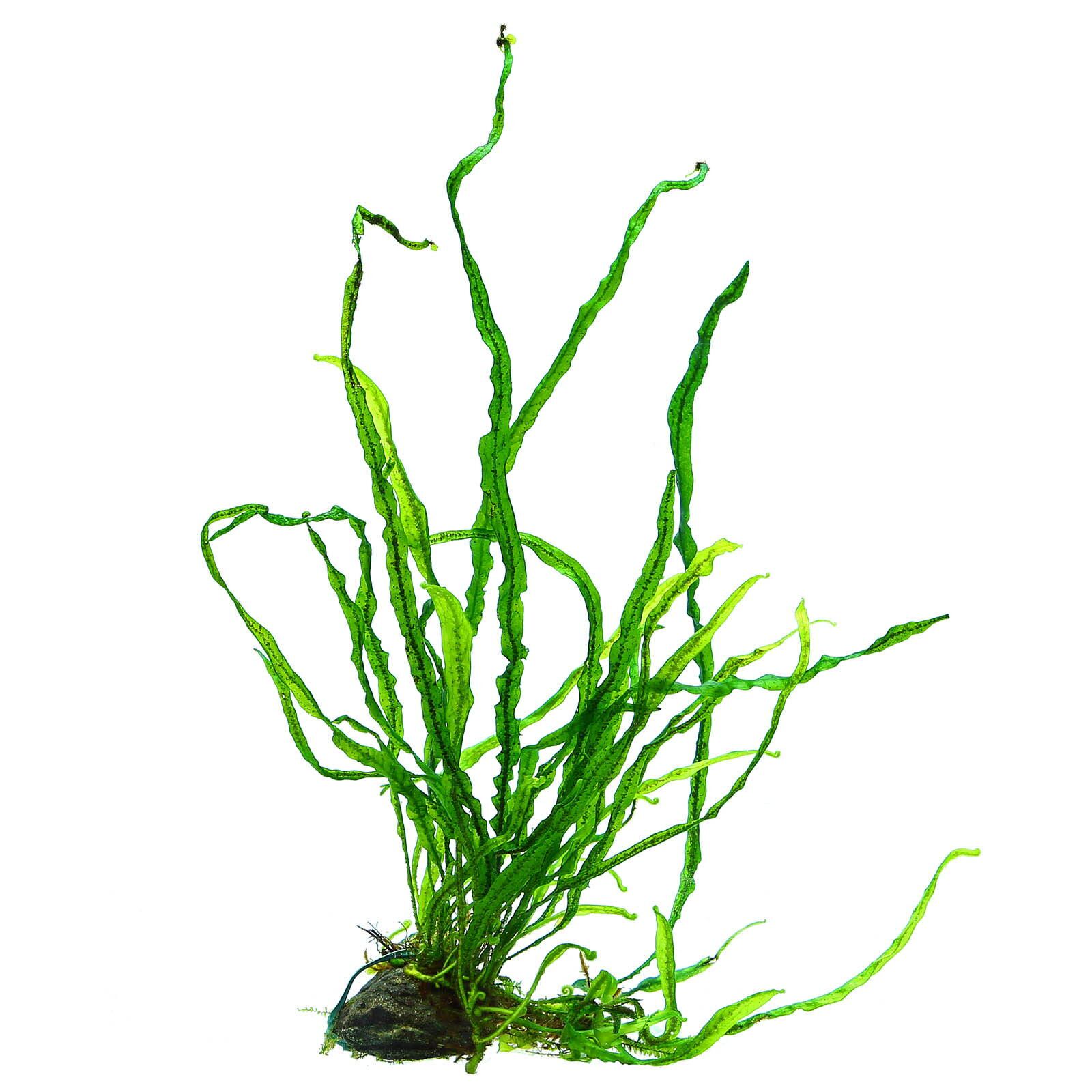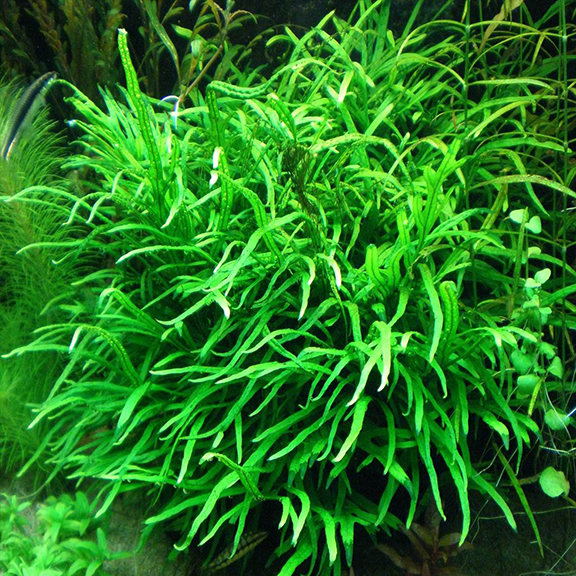
Needle leaf Java fern Flickr Photo Sharing!
Java Fern Needle Leaf is a highly sought-after rarity in the aquarium hobby. This is because the needle leaf variant is unique with thin, slender leaves that grow no wider than half an inch wide. The leaves of this variety are the thinnest within the Java Fern family, even more so than the Java Fern Narrow Leaf variety.

Java Fern Needle Leaf Air Plant
Java Fern is one of the world's most widely used plants in planted aquariums. It slow growth, unique leaf structure, and reproduction method makes it an aquarium smash hit. Java Fern tolerates most lighting conditions and many environments - from soft acidic water to alkaline conditions, and even brackish tanks!

Java Fern Needle Leaf — Buce Plant
Needle Leaf Java Fern: This variety of Java fern has leaves that are more sharply pointed than other varieties. The leaves only grow to around 6 inches, and this is one of the rarest Java fern varieties. Fork Leaf Java Fern: Although hardier than many varieties, this Java fern variety is very rare in the aquarium trade.

Buy Java Fern Needle Leaf Pot online at Best Price Air Plant
Varieties of Java Fern . Needle Leaf. This one offers thin, small leaves. The maximum size for this variety is 6 inches only, so it would fit perfectly in a small aquarium. It's rarely available in the market. Trident. The special feature of this variety is the lobbed leaves. Each leaf side can have a minimum of 2 and a maximum of 5 lobes.

Microsorum pteropus sp. Needle (Needle Leaf Java Fern) Aquatic Mag Java fern, Aquascape, Leaves
This type looks a lot like needle leaf Java fern only with wider, longer leaves. Taiwan narrow fern leaves have the same structure as needle-leaf fern which are ribbon-shaped, long and fairly narrow. Think of it as a bigger needle-leaf version. Mini Java Fern. Java fern narrow mini is a small hybrid cross between the standard Java fern and Java.

The beautiful plants i just received from Han Aquatics. Needle Leaf Java Fern and Java Moss
Needle Leaf Java Fern is a beautiful, narrow leaves variant of the usual Java Fern. It grows tall and narrow leaves that looks great when left to naturally sway according to water movement. To maximise the swaying effect, it is best placed near an area with higher water movement such as near the filter outlet area.

Java Fern Needle Leaf — Buce Plant
Java Fern helps to keep the water clean, provides a home for beneficial microorganisms, cover for inhabitants, and adds a natural look to the tank. It can be used as a background plant or as a foreground accent. Water Parameters Java Fern is adaptable to a wide range of water conditions.

Microsorum Pteropus Java Fern Needle Leaf Easy Beginner Aquarium Plant Glass Aqua
needle leaf Java fern needle leaf has a smaller leaf width when compared to narrow leaf. Therefore the name needle when translated into Indonesian means needle. Because the leaves of this type of java fern do look like a collection of long needles.

Microsorum pteropus "True Needle Leaf" Aquasabi Aquascaping Shop
The java fern is a very popular and accessible aquarium plant. Learn how to garden underwater with our complete growing guide! 2.58M; 1.1M; 2.8M; 902K; 85.1K; Categories Posts Shop ;. Some are narrow leaf fern varieties, like the needle leaf fern, and others have a less narrow leaf. The leaves also form the reproductive portion of the plant.

Needle Leaf Java Fern
Needle Leaf Java Fern The Needle leaf Java fern is unique because the leaves are much thinner than its counterparts and only grows about 6 inches tall. This also makes this fern great for smaller tanks. However they can be a bit harder to find than the other variations. Trident Java Fern The Trident Java fern is the rarest variation of them all.

Needle Leaf Java Fern
Availability Java ferns are available at most pet stores that sell aquarium plants. They typically cost $4 to $9 depending on size. You can buy this freshwater plant at AquariumCoop or AquariumFish. Appearance & Size The Java fern is a green, leafy plant made up of two main components — the rhizome and the leaves.

Microsorum Pteropus Java Fern Needle Leaf Easy Beginner Aquarium Plant Glass Aqua
Java Fern is one of the popular aquarium plants and is scientifically know as Microsorum Pteropus. They add beauty to the tank with its delicate look and unique shape. Aquarists commonly use them because of their slow growth. Java Fern is hardy and doesn't need strict water conditions to thrive.

Microsorum Pteropus Java Fern Needle Leaf Easy Beginner Aquarium Plant Glass Aqua
Needle Leaf Java Fern. Microsorum pteropus is an uncommon Java fern variant probably originating from Sarawak (Borneo). It has feathery lobed leaves with approx. 2-5 lobes on each side. The central and the lateral lobes are very narrow, much like those of "Needle Leaf". It should be grown on a root or stone, attached with fishing line until.

Needle Leaf Java Fern Aquatic Plant for Sale Australia AuShrimpHome Australia Shrimp Home
You can find several different variants of this plant, including: needle leaf, narrow leaf, trident and the windelov. This fern is used in lots of different ways but most people use them to create a low lying shrub or hedge. Another popular way to plant them is in the background where it can grow to its full height of 13 inches.

Needle Leaf Java Fern (Microsorum pteropus sp. needle)
There are many different varieties of this fern, and the size of the plant and leaf shape will vary greatly from variety to variety. The four most commonly available are the narrow leaf, the needle leaf, the Windelov and lance leaf. What makes the Java fern so attractive to aquarists, is that it is one of the easiest aquatic plants to grow.

Java Fern Care Guide Species, Planting, and Propagation • Aquarium Fishes
The Java fern ( Microsorum Pteropus) is a highly variable jungle plant that gets its name from the island of Java in Indonesia. Belonging to the Polypodiaceae family, this popular plant is commonly found in rocks, tree roots, and on the ground alongside streams and waterfalls throughout Southeast Asia.